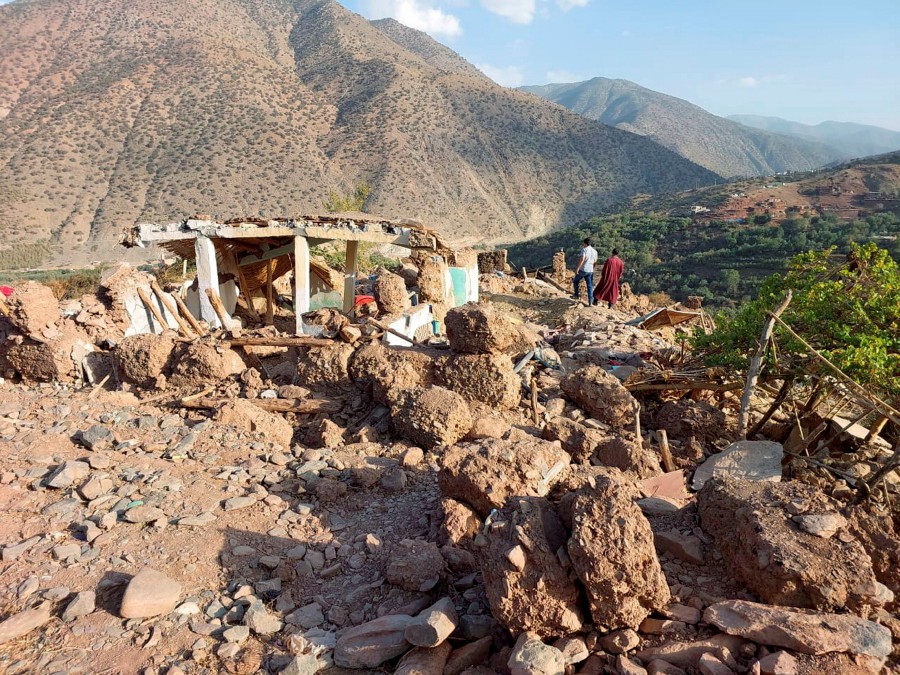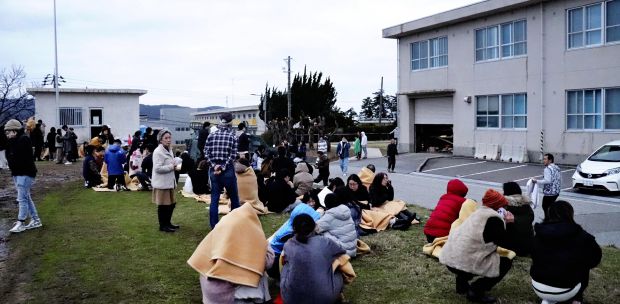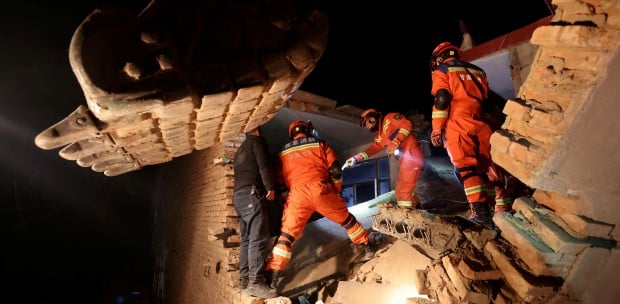MARRAKESH: The stench of rotting bodies still lingers in several deserted villages in the Atlas Mountains here, which were devastated by the 7.0 magnitude earthquake three weeks ago.
One in particular is Tiniskt village, where it takes navigating over 200 kilometres of winding roads from the city centre of Marrakesh to reach.
Cars and other vehicles have to pass through narrow paths on the side of cliffs, more than 800 metres deep. No safety barriers are visible and drivers have to be skillful when encountering oncoming traffic.
The gravel roads up in the mountains are quite intimidating, with some of the routes severely damaged or collapsed due to the strong earthquake that struck on Sept 8.
Muslim Care Malaysia (MCM) secretary-general, Ahmad Safuan Ujar, and deputy president, Mohd Johari Ismail went to visit. They were greeted by one of the villagers, Abdul Hameed Lahsen. The 40-year-old man was still able to crack a smile even though his home, where seven family members resided, had been reduced to rubble.
According to him, Tiniskt village, located on the edge of the Atlas Mountains at an altitude of over 2,000 metres above sea level, was home to nearly 300 residents from 80 families.
"However, the powerful earthquake that struck on Sept 8 caused all 80 houses in this village to collapse and be completely destroyed. Even more tragically, 36 victims were found dead and buried alive.
"The school building and Quran study centre were also completely destroyed. However, the Omar Al-Farouq Mosque in this village is still standing, although its walls suffered severe cracks," he said.
Recounting the moments of fear, Abdul Hameed said he and his five children, wife and mother had just finished dinner before resting in the living room of their home.
"Suddenly, the house I was in shook violently, followed by cracking sounds in the earth's surface. Without thinking, I immediately pulled all the children out of the house. Moreover, in a panic, I managed to get my mother and wife out before gathering them in an open area nearby.
"At that time, the screams and cries of the villagers could be heard from all directions. The situation became chaotic, especially when the power supply was cut due to the earthquake," he said.
He added that in the darkness, the surviving villagers tried to find and rescue their trapped family members.
"Unfortunately, many children and women perished as a result of being crushed by house walls or buried in the gaps of the residential structures. The effort to find all the bodies of the victims buried alive took two days before all 36 victims were buried in a nearby area. Dozens more seriously injured victims were sent to Marrakesh Hospital for treatment," he said.
He mentioned that the families of the survivors are currently living in temporary tents due to fears of another earthquake.
"Most of them live in canvas tents built under trees in groups," he said.
Built with stones "bound" with mud to replace cement, most of the village homes were destroyed due to weak building structures without concrete pillars.
Although all the deceased victims have been buried, the pungent odour of dead bodies still permeate the air, carried by the mountain winds. It is understood that there are tens of villages in the same mountainous area that have suffered a similar fate.





